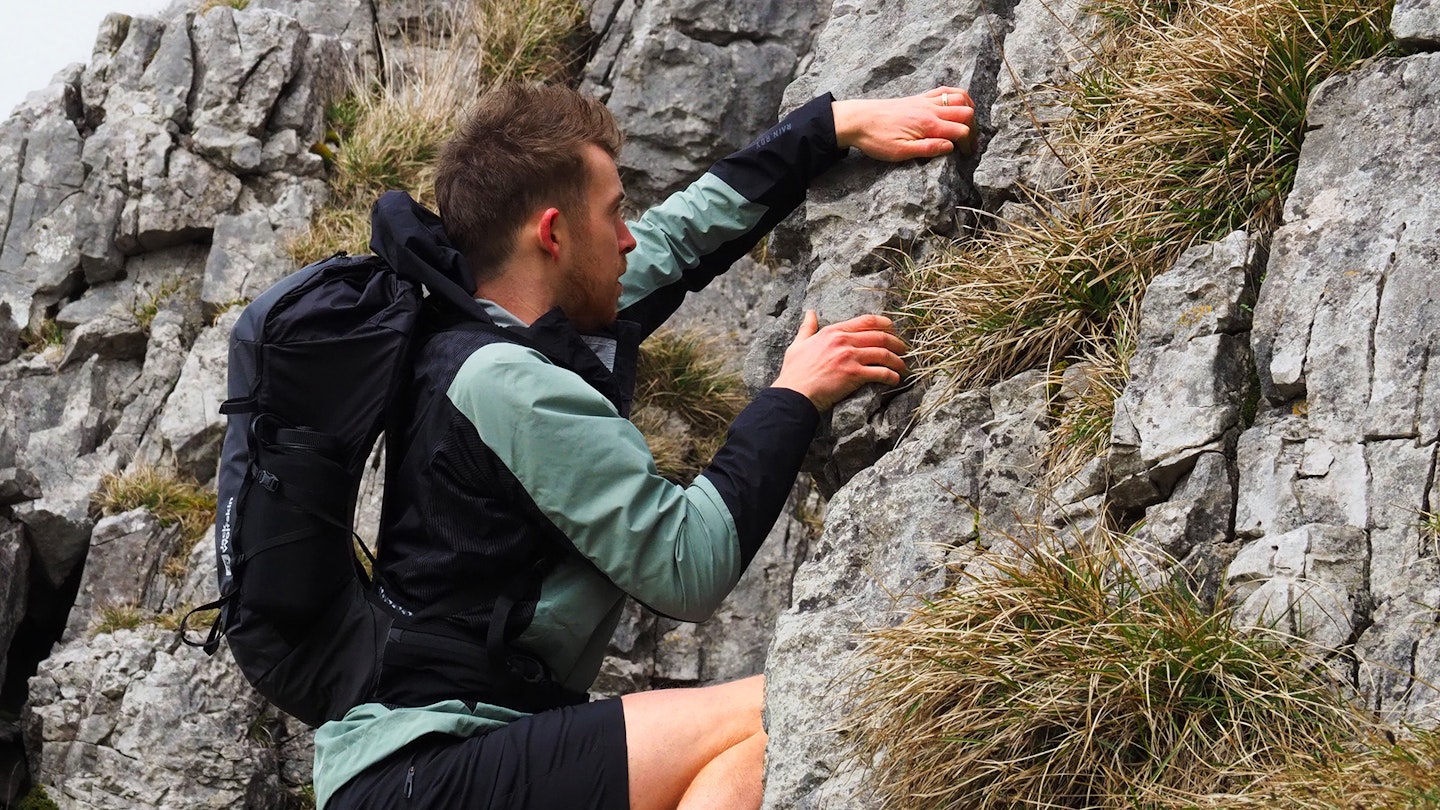German outdoor and travel gear giant Jack Wolfskin is a very recognisable brand and probably most well known for its non technical walking clothing, hiking backpacks, and bikepacking gear.
Regarding backpacks, the brand covers almost every type – here we’re focusing on one of its hiking daypacks designed specifically for hot weather: the aptly named Prelight Vent 20, which has a defined suspension back system to maximise ventilation between your back and the pack’s back panel.
The Prelight Vent 20 is up against stiff competition from hiking pack heavyweights like Osprey, Lowe Alpine, and Gregory. So, does the Jack Wolfskin pack have something fresh to offer?
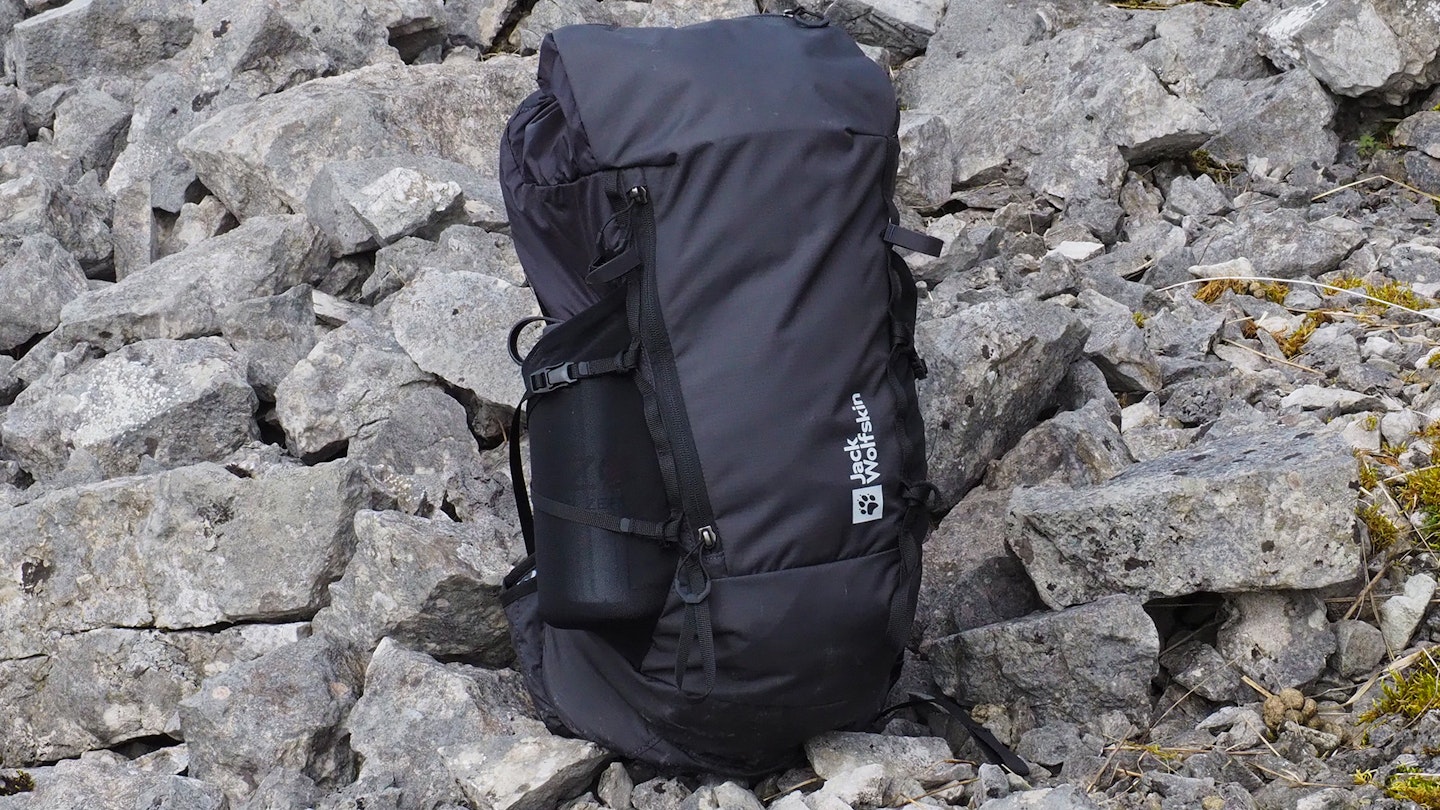 LFTO
LFTOwww.jack-wolfskin.co.uk
Pros
- Excellent ventilation
- Sustainable design
- Raincover included
Cons
- Relatively pricey
- Curved back panel robs some internal space
| Weight | 990g |
| Volumes | 20L, 25L, 30L |
| Materials | PFC-free recycled nylon |
| Sizes | One size |
Design and features

The Prelight Vent 20 looks quite technical. And while it comes with loads of features, it’s still meant to have mass appeal.
Let’s start with that back system. It’s called Aerovent Core and is a suspension design that holds the pack away from your body to encourage plenty of airflow. There are two parts to the Aerovent system: a thin, taut, perforated mesh sits against your back, while another piece of stretched fabric is held in place by a wire frame in a curve to create a large gap between your back and the pack itself.
The hip belt and shoulder straps are lightly padded and also have perforated mesh for ventilation.
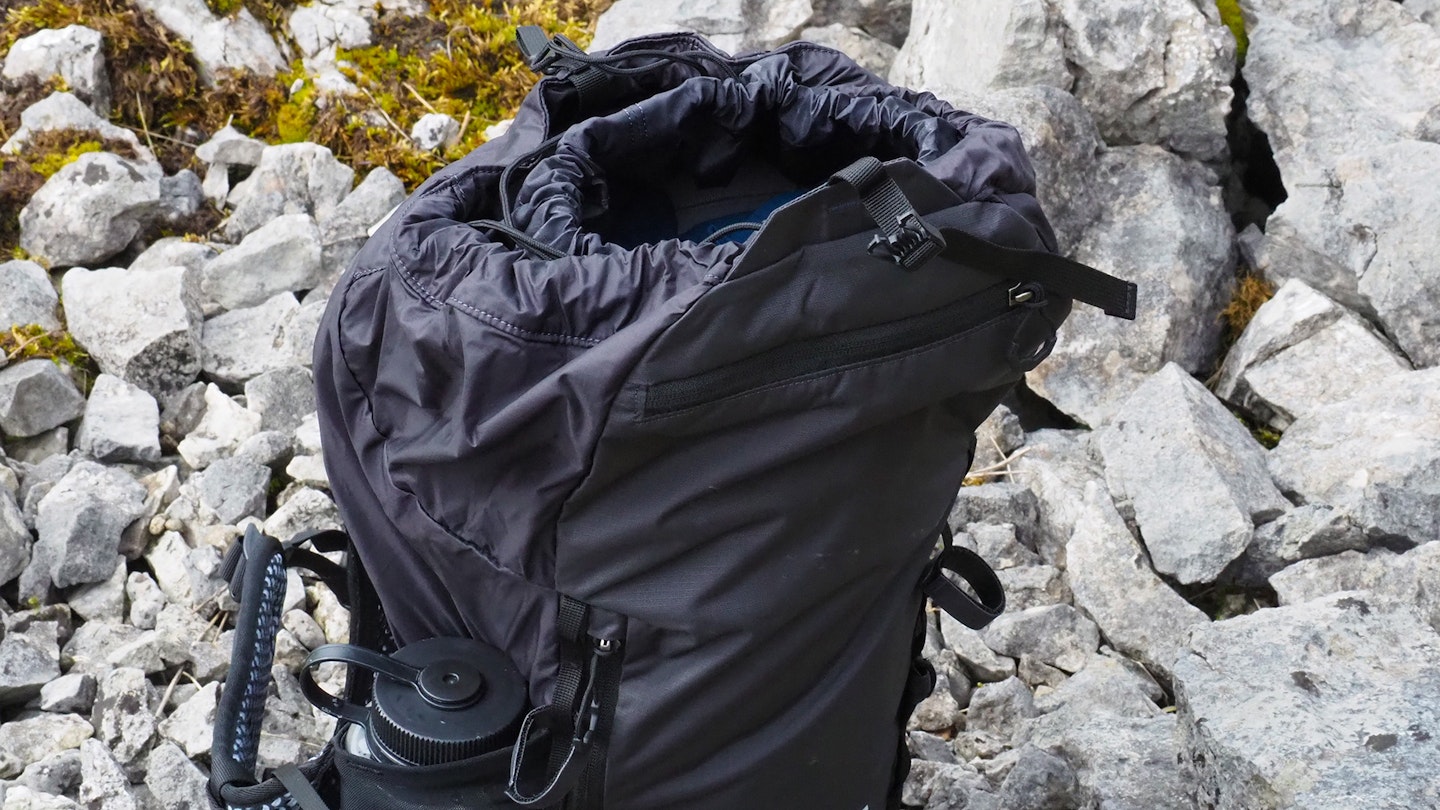
In terms of storage, the main compartment is accessed from the top via a double drawcord, or the side zip. There isn’t any small internal pocket in the main compartment but there is a small external top pocket, and sleeve for a hydration bladder – but do note the slit for the tube is quite small.
Only one hip belt has a pocket, and on the front of the back there are daisy chain and trekking pole loops. Each side has a drink bottle sleeve. A raincover is also stowed in a zipped pocket at the base of the pack.
Performance and comfort
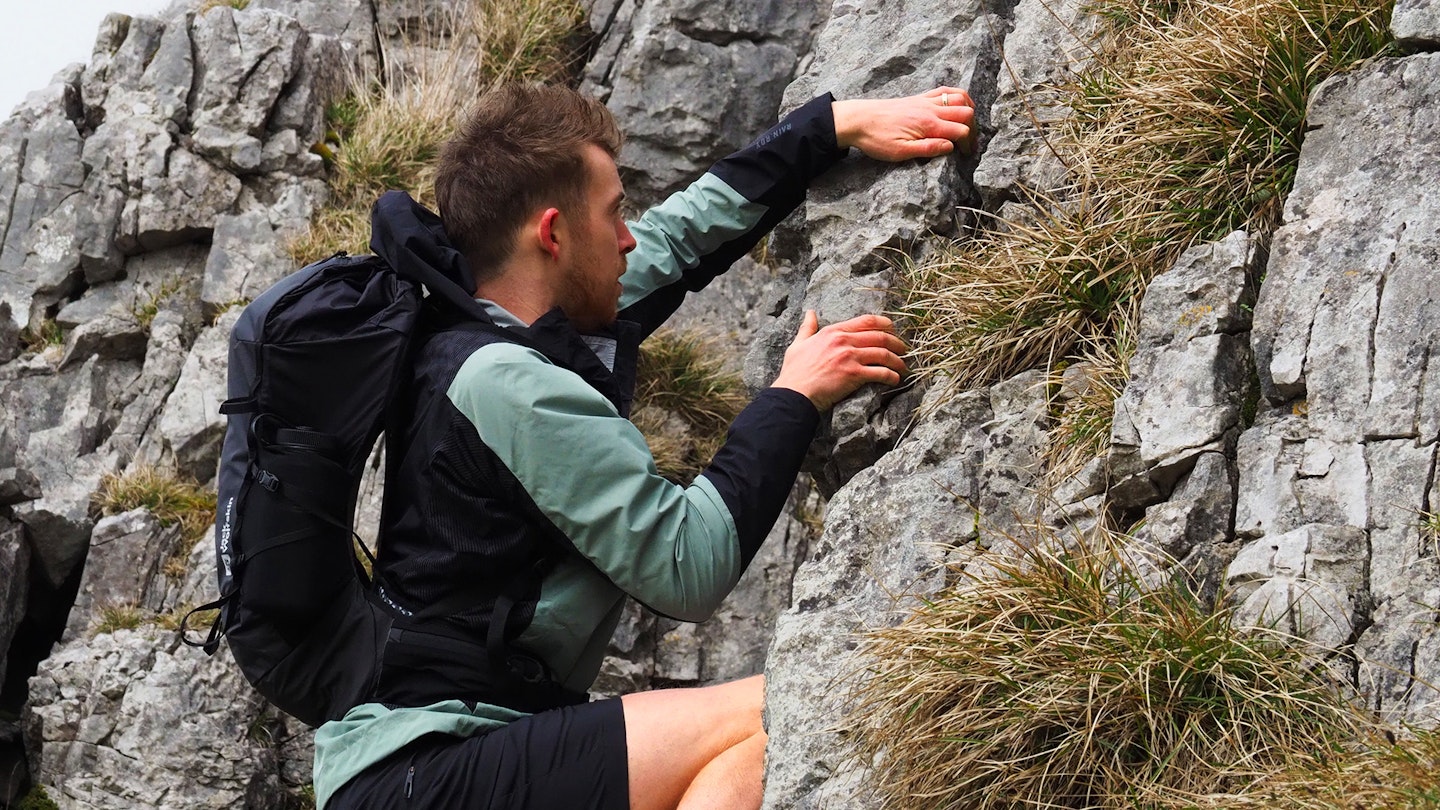
At just under 1kg, the Prelight Vent 20 is about average for a 20-25 litre hiking daypack. Because of the frame, it feels more rigid than frameless daypacks you may have used or been used to before, but it’s a comfy pack to wear.
We liked how the shoulder straps didn’t inhibit our arms at all, which is particularly useful for scrambling and more technical terrain. The Aerovent Core back system does its job brilliantly too – this really is one of the most well ventilated daypacks we’ve tested.
One of the trade-offs of that dedication to airflow, however, is that at 52 x 20 x 27cm, the Prelight Vent 20 isn’t the most capacious pack for its size. That curved panel robs internal space. Rivals like the Mammut Lithium 25, although not quite as well ventilated, offer an extra five litres of volume within the same dimensions.

The fabrics used are lightweight but not flimsy, which is just as well because the Prelight Vent 20 isn’t cheap. We didn’t have any issues but on the lookout for potential weak points, the stitching at the top of the shoulder straps looks like it could be one. The buckles are also quite unique but should they break you could easily replace them with more generic ones.
We liked the drink bottle sleeve design. The mesh is stretchy but there is also a compression strap with a clip so bottles of all sizes can sit in there very securely. The Prelight Vent 20 misses out on a front stash pocket but the side zip somewhat addresses that issue.
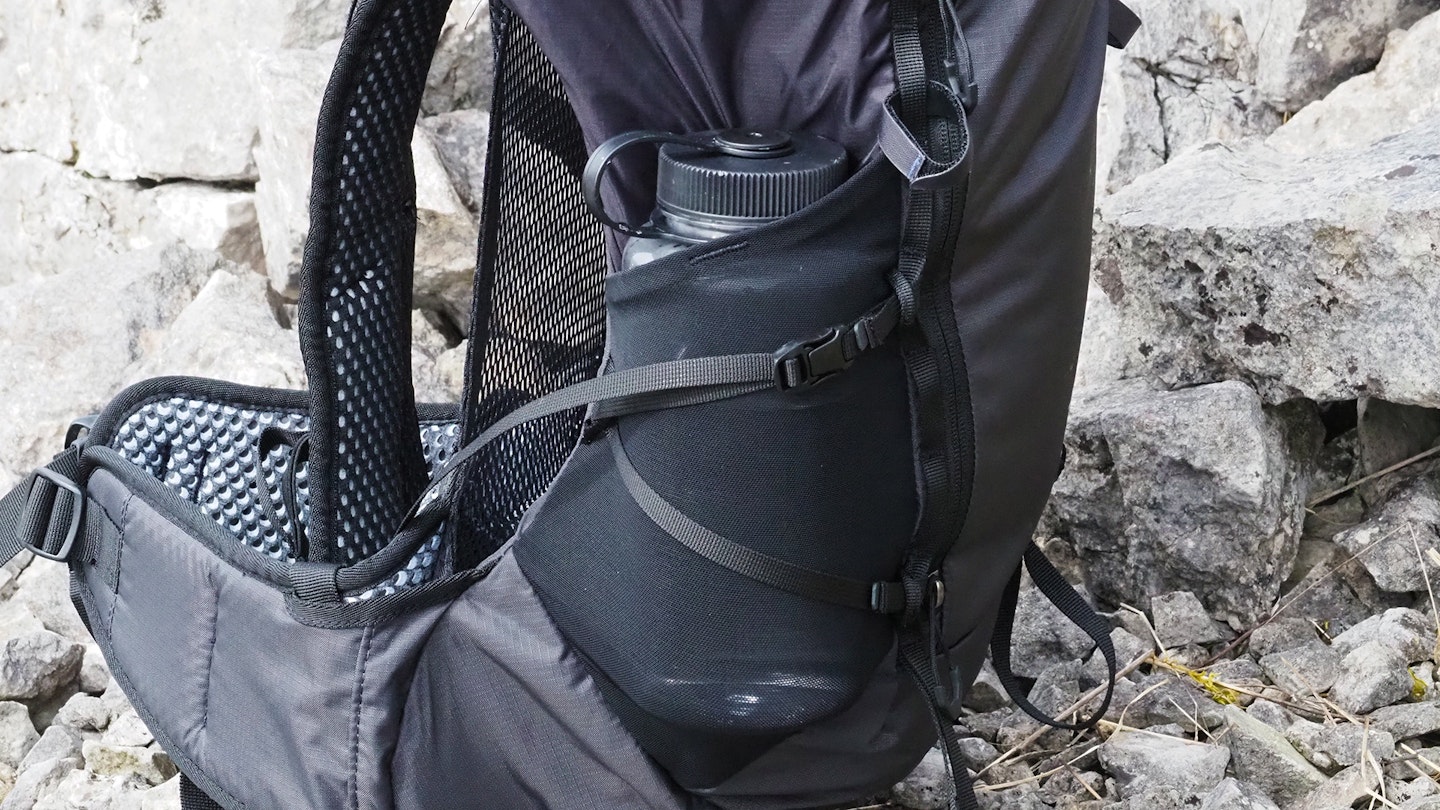
For sizing, there is only one and the back panel isn’t adjustable, so this pack will fit, or it won’t. Although the shoulder straps are adjustable of course. Our tester has a back length of 50cm and the Prelight Vent 20 fitted well.
Sustainability
The Prelight Vent 20 does quite well here. It is made from recycled material, but goes further. It’s a bluesign-approved product and PFC-free.
Jack Wolfskin is also a Fair Wear Foundation member with ‘Leader’ status which, according to Fair Wear, means Jack Wolfskin shows ‘best practices in complex areas such as living wages and freedom of association’.
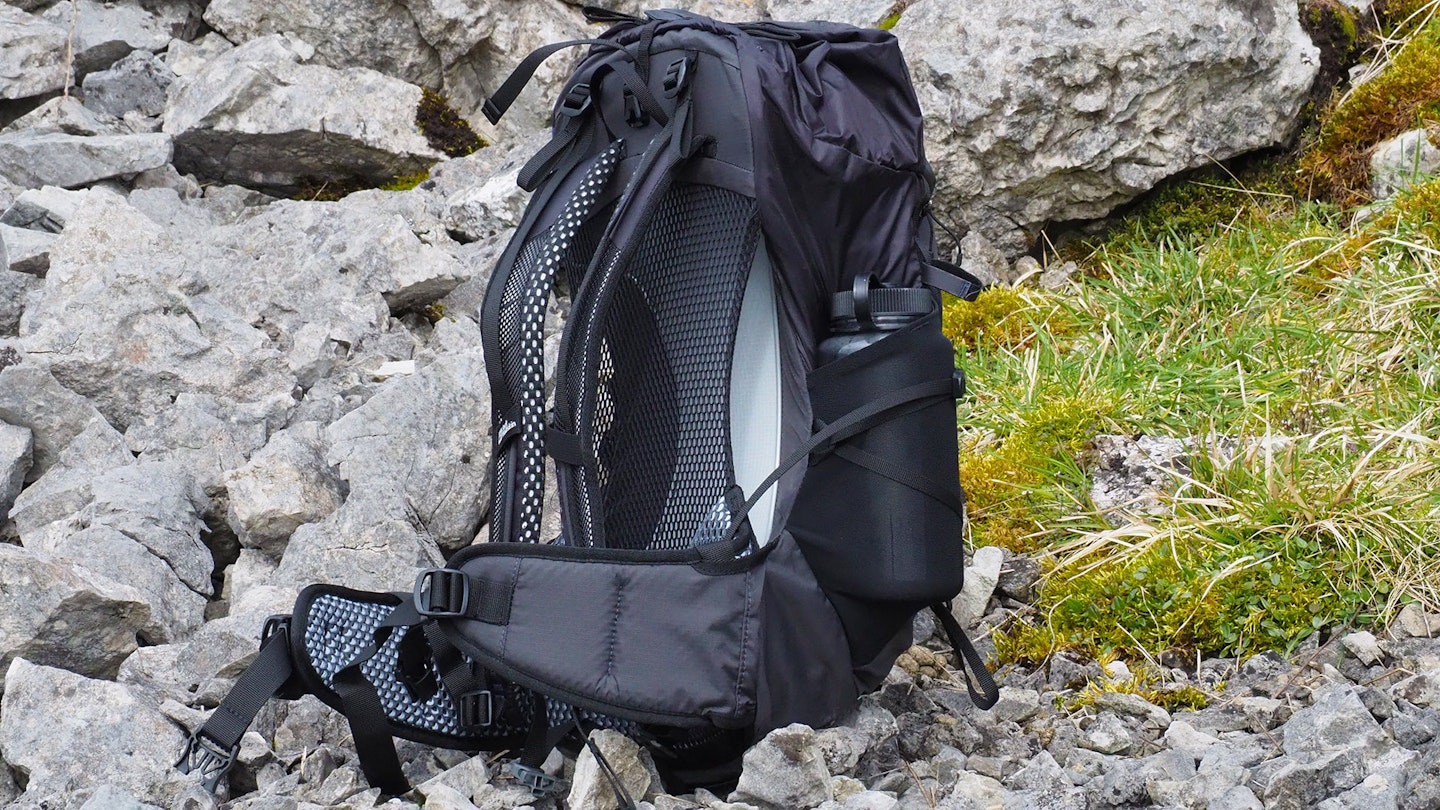
Price and competition
With an RRP of £150 at the time of writing, the Prelight Vent 20 is relatively pricey for a small hiking pack. Not only is the Prelight Vent 20 up against premium competitors but also popular, lower cost options from brands like Decathlon.
Berghaus’ Freeflow 24L and Lowe Alpine’s AirZone Ultra 26 have similar highly ventilated back systems and prices but manage to offer more volume than the Prelight Vent 20. Meanwhile, the Decathlon Quechua 30L MH500 backpack, although heavier and not as comfortable or sustainable, can be had for almost a third of the price.
Verdict

The Jack Wolfskin Prelight Vent 20 backpack is an excellent daypack for hot weather thanks to its highly ventilated back system. If that’s your primary requirement, this is one of the best options around – and quite a sustainable one at that.
But the trade-offs are that you don’t get as much volume as you do from many rivals, and it's relatively expensive.
How we tested

The Jack Wolfskin Prelight Vent 20 was tested and reviewed by Chris Williams who is one of our staff writers and gear testers. Chris has been with us since 2021 and has several years of journalistic and outdoor industry experience.
